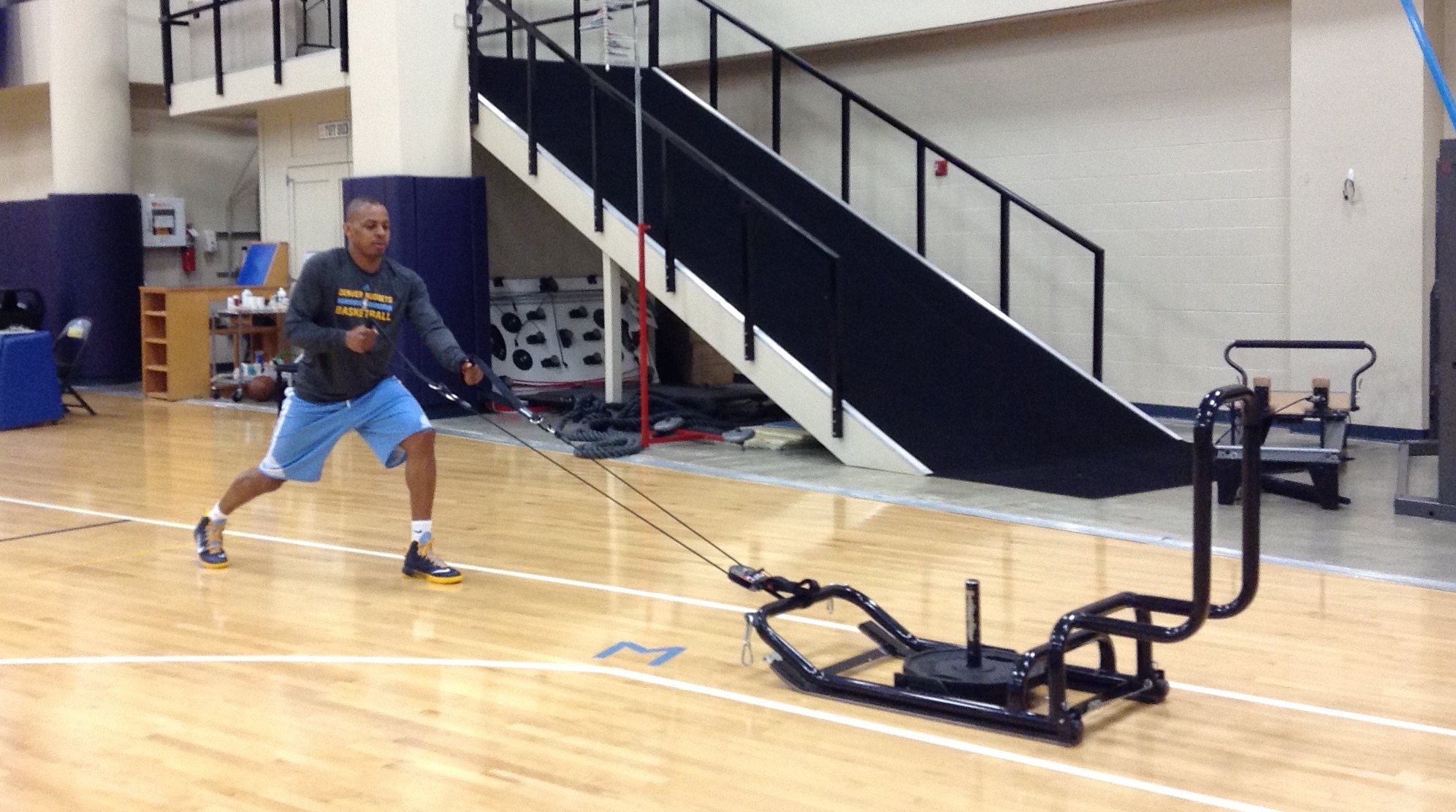Increase Athletic Strength with Rotational Bodyweight Training
![]()
As someone who makes a living by optimizing human performance, I make sure to provide my athletes with the programs and modalities that help maximize every second of training. I was introduced to suspended bodyweight training in 2006, and it has been a part of my conditioning program ever since.
I’ve recently been introduced to rotational bodyweight training, a tool and program that changes the way I use suspension training. But is it really that much different from suspended bodyweight training?
Rotational bodyweight training with the CrossCore180 falls into the suspended bodyweight training category. It may be seen by some as just another suspension trainer wannabe. Both use bodyweight and angle to provide resistance. However, the way rotational bodyweight training works mechanically and physiologically is much different. Here’s why:
- Traditional suspended bodyweight training allows for linear, lateral and rotational movement.
- But because with most (if not all) suspended bodyweight training units, the anchor point is locked or limited in movement, the length of the straps isn’t permitted, restricting range of motion. This means for any rotation movement to occur, the user must move his or her body around a fixed anchor point (i.e., the handles).
- With rotational bodyweight training with the CrossCore180, the anchor can be locked (and function like any other traditional suspension unit) or unlocked to create rotational movement, thus enabling an additional rotational stimulus to the body while performing suspended exercise movements.
- The free moving pulley places additional stabilization demands on the athlete, much like the difference between using a bar and dumbbells for a similar movement pattern.
Rotational bodyweight training, because of its centralized moving anchor point:
- Poses a greater challenge to one’s center of gravity compared to a locked attachment or anchor, making stabilization or bilateral equalization more difficult than with a semi/locked anchor.
- Allows for asymmetrical training while applying dynamic tension to suspended bodyweight training movements.
The purpose of adding rotation to suspended bodyweight training movements (or any exercise movement) is not to see how far we can rotate in the transverse plane, but how we can properly train the body to stabilize the lumbar spine, while training the musculature of the thoracic spine and hips to properly perform rotational movements.
Add rotation to these traditional suspended bodyweight movements to better engage your hips and core. Check out the exercises below, performed as part of the Denver Nuggets’ strength and conditioning program.
Alternating Chest Press with Rotation

Reach and Pull with Bands

Suspended Flutter (with Core Board)

Supine Flutter with Hamstring Curl

Sled Pull with Rotation

Check out other workouts that improve rotational strength:
RECOMMENDED FOR YOU
MOST POPULAR
Increase Athletic Strength with Rotational Bodyweight Training
![]()
As someone who makes a living by optimizing human performance, I make sure to provide my athletes with the programs and modalities that help maximize every second of training. I was introduced to suspended bodyweight training in 2006, and it has been a part of my conditioning program ever since.
I’ve recently been introduced to rotational bodyweight training, a tool and program that changes the way I use suspension training. But is it really that much different from suspended bodyweight training?
Rotational bodyweight training with the CrossCore180 falls into the suspended bodyweight training category. It may be seen by some as just another suspension trainer wannabe. Both use bodyweight and angle to provide resistance. However, the way rotational bodyweight training works mechanically and physiologically is much different. Here’s why:
- Traditional suspended bodyweight training allows for linear, lateral and rotational movement.
- But because with most (if not all) suspended bodyweight training units, the anchor point is locked or limited in movement, the length of the straps isn’t permitted, restricting range of motion. This means for any rotation movement to occur, the user must move his or her body around a fixed anchor point (i.e., the handles).
- With rotational bodyweight training with the CrossCore180, the anchor can be locked (and function like any other traditional suspension unit) or unlocked to create rotational movement, thus enabling an additional rotational stimulus to the body while performing suspended exercise movements.
- The free moving pulley places additional stabilization demands on the athlete, much like the difference between using a bar and dumbbells for a similar movement pattern.
Rotational bodyweight training, because of its centralized moving anchor point:
- Poses a greater challenge to one’s center of gravity compared to a locked attachment or anchor, making stabilization or bilateral equalization more difficult than with a semi/locked anchor.
- Allows for asymmetrical training while applying dynamic tension to suspended bodyweight training movements.
The purpose of adding rotation to suspended bodyweight training movements (or any exercise movement) is not to see how far we can rotate in the transverse plane, but how we can properly train the body to stabilize the lumbar spine, while training the musculature of the thoracic spine and hips to properly perform rotational movements.
Add rotation to these traditional suspended bodyweight movements to better engage your hips and core. Check out the exercises below, performed as part of the Denver Nuggets’ strength and conditioning program.
Alternating Chest Press with Rotation

Reach and Pull with Bands

Suspended Flutter (with Core Board)

Supine Flutter with Hamstring Curl

Sled Pull with Rotation

Check out other workouts that improve rotational strength:










